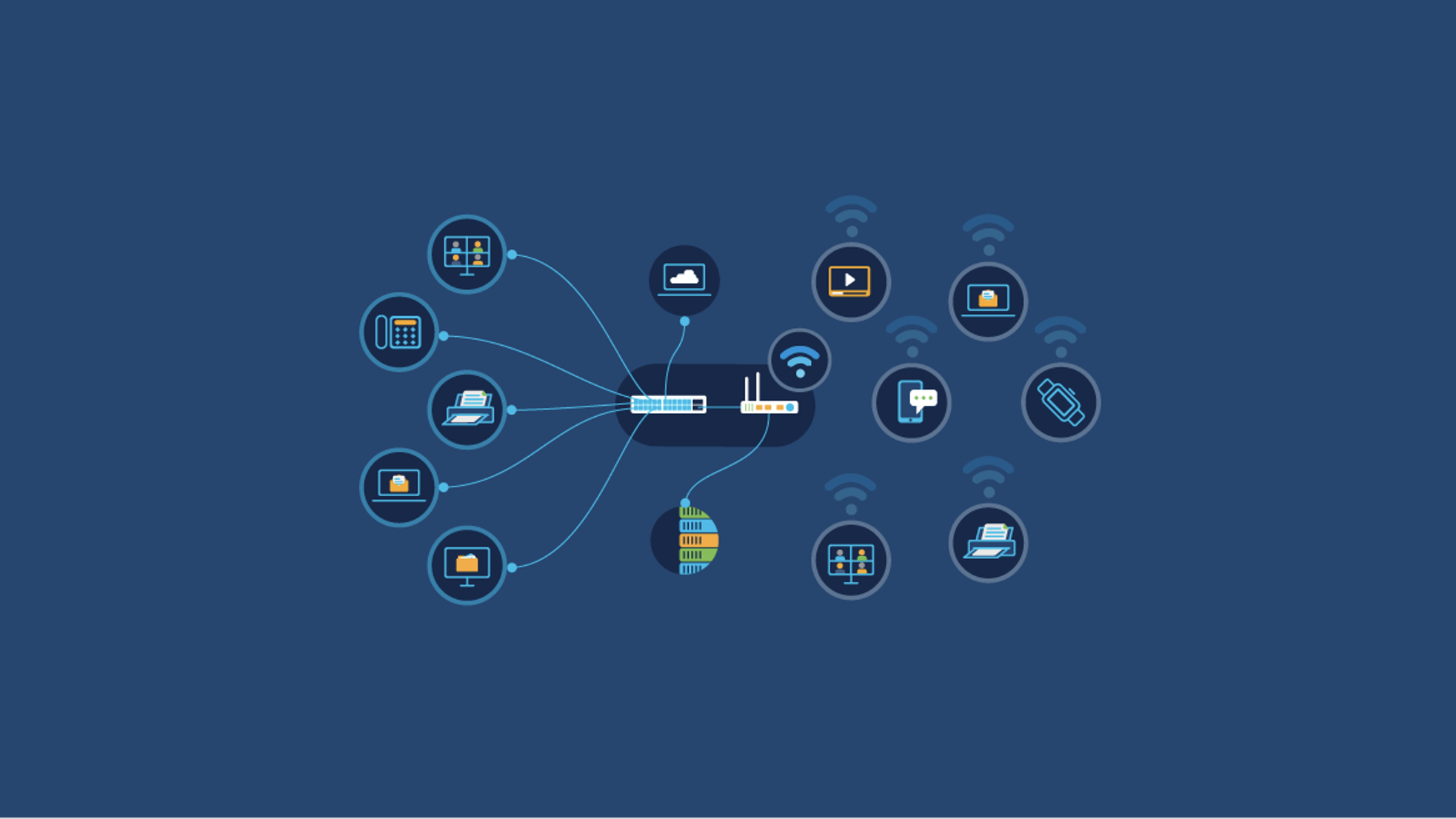- Google Pixel 9a vs. iPhone 16e: I took 100 photos with both phones, and here's the winner
- Japanese Account Hijackers Make $2bn+ in Illegal Trades
- Assessment Frameworks for NIS Directive Compliance
- “곧 사라질 직책 vs 기업의 미래 축”··· CDO·CAIO를 두고 갈리는 전문가 진단
- Northius evoluciona hacia un modelo de organización tecnológica, escalable y centrada en el alumno
Top 3 Use Cases of AI-Enhanced Networking – Cisco Blogs

Part 3 of the Series: AI-Enhanced Infrastructure for AI Ops.
In my previous blogs, I have discussed the importance of artificial intelligence (AI)-enhanced infrastructure applied for IT operation teams, and the technologies enabling these models. Now it is time to talk about how AI-enhanced Networking capabilities are being applied in operations today.
More organizations across the globe are benefiting from the application of AI-enhanced technologies to provide better IT capabilities. One example is San Jose State University, which leverages ML and AI capabilities of network infrastructure to obtain a more strategic view of their network, security postures, and risks; thereby increasing their operational resiliency.
The world of AI-enabled technologies is quite extensive, so choosing the correct solutions is tied to the use cases that each organization wishes to implement. Based on some of the success cases we see from Cisco customers, I would like to explore three use cases that demonstrate the benefits of an AI-enhanced infrastructure for NetOps teams and that can be applicable for almost every industry:
1. AI-driven Issue Identification
Traditionally, when a network issue happens, the NetOps team would have to manually review logs, events, and other operational data from multiple systems to determine the problem. This could be very time-consuming and could significantly extend the outage times experienced by the customers. This becomes more challenging if the issue is intermittent and cannot be created consistently. It is humanly impossible for IT teams to manually review all the network performance indicators, logs, events, etc. to find and fix intermittent problems.
AI Enhanced infrastructure continuously generates operational telemetry data. AI/ML techniques use the telemetry data to build dynamic system baselines, to detect significant variance from those baselines, and to detect system anomalies and suggest possible root causes for these variances or anomalies. When we bring Machine Reasoning (MR) capabilities into the mix, AI-enhanced infrastructure can pinpoint the exact origin of the fault and provide step-by-step remediation to solve the issue.
This AI-driven network observability not only improves the experience for the NetOps team, but it also ensures the best possible network experience for the network user, as most of the network issues can either be resolved almost immediately or, in the best-case scenario, they can be prevented altogether, so there is a seamless connectivity experience without the user involvement or notification of any outage.
Having a fully automated issue resolution model can be “scary” for some NetOps teams, as we have discussed that all AI-driven systems require a level of trust for them to seamlessly operate as a closed-loop system. To achieve that trust, it is possible to have remediation integrated into the ITOps or NetOps workflows with specific human control points, where the network professionals can validate the analysis that was carried out by the AI, before implementing the suggested remediation. This can be achieved through the integration of the AI system with IT service management (ITSM) systems that can provide the necessary approval gates.
We are currently able to help organizations make this possible thanks to Cisco DNA Center Assurance. Deploying DNA Center Assurance in the network infrastructure can provide better insights into the network operation and automate issue identification and detection.
2. Improving Wireless Performance
Wireless connectivity standards have evolved drastically, from the initial 802.11a/b to the current Wi-Fi 6E. The speeds, number of channels, channel bandwidth, etc., have increased the complexity of wireless deployment exponentially.
The radio resource management (RRM) capability is used to dynamically adapt the channel allocation and transmission power levels of APs in a given deployment, to avoid co-channel and adjacent channel interference created by multiple neighboring APs.
 In Wi-Fi 6E with four-channel bandwidths, more than 80 channels, and multiple attributes to optimize for, all the potential operational combinations make it impossible for a human to optimize performance manually. AI/ML capabilities are helping NetOps to keep up with this complexity.
In Wi-Fi 6E with four-channel bandwidths, more than 80 channels, and multiple attributes to optimize for, all the potential operational combinations make it impossible for a human to optimize performance manually. AI/ML capabilities are helping NetOps to keep up with this complexity.
AI-enhanced Radio Resource Management can analyze the current and historical network conditions instead of the present conditions (a single point in time only), to set the ideal wireless configuration parameters and deliver optimal performance as the network conditions change across time.
Another interesting AI-enhanced capability for wireless networks is related to the way the physical environment might impact its performance. Designing the best wireless network architecture depends on multiple factors, like the number of users, physical obstacles like walls or windows, and even the building layout.
In the past, to architect a wireless network we relied on a 2D wireless visualization of the building space because most of the devices in the office networks were PCs sitting on a desk at a fixed height. Today, with IoT sensors and devices, mobile devices, and the diversity of working environments, the need to measure and optimize wireless performance across the entire physical space is required.
Cisco DNA Center and its Wireless 3D Analyzer is helping NetOps teams by saving time in planning, troubleshooting, and validating the expected network coverage using immersive 3D visualization of the deployment environment, offering, among other capabilities, a first-person virtual walk-through of the building.
3. Enhanced Endpoint Analytics
Endpoints may require different QoS and security policies when connecting to the network. There were two ways NetOps teams achieved this when onboarding a device: (1) set up the policy for each device as it is connected to the network, or (2) set a policy for a group of devices and manually identify the group for the newly connected device. Of course, both models were prone to human error, especially with the exponential growth of network devices that IoT has brought to the work environment.
The complexity of manually categorizing every single device within a network exposes an alarming security risk because allowing devices into the network with improper network policies could open the gate for bad actors to access and attack your infrastructure.
To reduce human errors, AI/ML is used to automatically recognize and understand all the endpoints connected to a network based on the device’s behavior. This automatic identification classifies and assigns every endpoint to the correct group ensuring that a consistent set of policies are applied to the entire device group, with minimal human intervention.

The AI Endpoint Analytics capability within Cisco DNA Center is helping ITOps teams to drastically reduce the security risks and manual operation time by gathering deeper context and visibility from their network and devices ecosystem. Then once endpoints are operating within the network, Cisco Identity Services Engine (ISE) can help monitor device behavior and continuously enforce policy and segmentation for an effective zero-trust network environment.
These three are brief examples of use cases available for IT teams to use right away. But I want to reiterate the importance of implementing business-relevant use cases of AI-enhanced infrastructure and setting the right pace for your own AI transformation journey.
If you would like to hear more about these use cases, I invite you to hear the latest podcast episode of Cisco Champion Radio, where we discuss how AI technologies are supporting ITOps teams today.
Listen to Cisco Champions Podcast AI-Enhanced Infrastructure for AIOps
Additional resources:
Blog: The why and how of AI-enhanced infrastructure
Blog: 6 things you should know about AI-enhanced infrastructure for AIOps
Blog: What does neuroscience have to do with the Internet?
Learn more about Network Analytics
Share:

